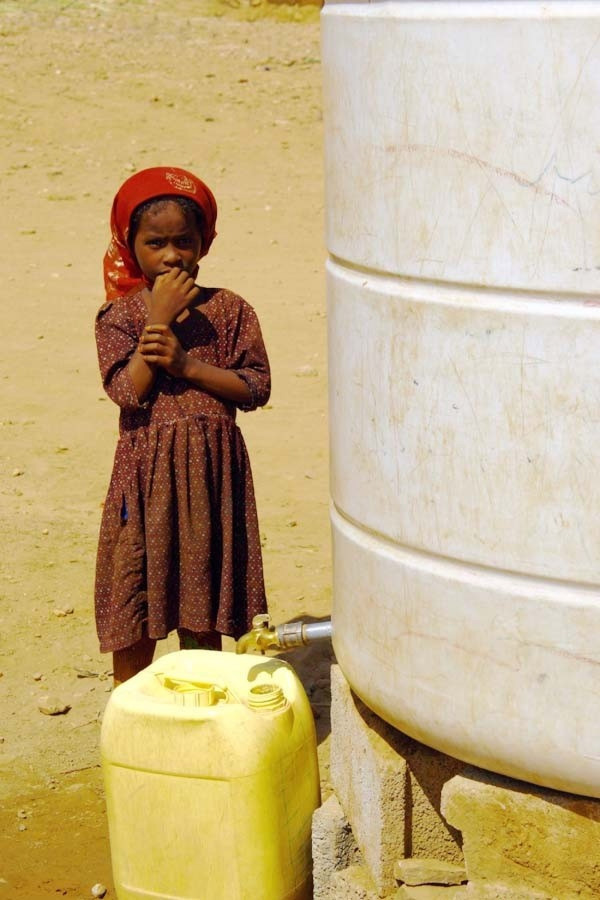One More For The List Of Yemen's Woes: Water's Running Out

In Yemen's capital, Sanaa, tap water is only available once or twice a week for many residents who cannot afford to pay for the ever-dwindling resource. Most have to expend the time and energy to haul large plastic containers to public fountains to bring water back to their homes.
The city is on track to become the first capital in the world to run out of water by 2025, according to a 2010 report commissioned by the Yemeni government.
The situation is dire across many parts of the Arab Peninsula country, as its water tables continue to be depleted faster than they can be replenished amid illegal ground well drilling and a population (23 million) larger than its remaining, and mismanaged, resources can sustain.
At 3%, the country has one of the highest population growth rates globally, with the population expected to double in 23 years to around 40 million according to UN data. And that's on top of political instability following the violent 2011 uprisings and the penetration of al Qaeda in the country, factors that have also pushed the water issue toward the bottom of the new government's priorities as it seeks to establish control and address a number of social issues, particularly rising religious extremism and ethnic conflicts.
Approximately 90 percent of Yemen's water resources are used for agriculture, half of which is estimated to be used for the cultivation of khat, a narcotic plant that is commonly chewed for its properties as a stimulant, though it also reduces appetite and can induce hallucinations.
"Almost 45 percent of all water in Yemen is used to cultivate a plant that feeds no one, in a country where almost half of the population is food insecure," wrote the UN Office for the Coordination of Humanitarian Affairs' IRIN news service in a recent article.
Khat is widely cultivated for its profitability, valued at five times that of typical fruit crops, though it also takes up five times more water to produce than grapes, for example. It has also been deeply entwined within the culture of Yemen for centuries, making it a particularly difficult tradition to kick, not least of all due to the fact that it is moderately addictive.
"We inherited khat cultivation from our forefathers," Ahmed Rajeh, a khat farmer in Sanaa, had told IRIN in 2007.
"And it will be the future business for my children as well. Let us irrigate our crops, and God shall enrich our ground and renew our wells if they dry up."
Rajeh may soon see his faith tested. Sanaa, as Yemen's largest city with a population approaching 2 million, is primed for water depletion.
The water issue, however, is very much intertwined with Yemen's social tensions.
"Water is and will be the reason for powerful conflicts in the future," Abdulwali el-Jilani, a water specialist with the USAid-funded Community Livelihood Project, told IRIN.
As water becomes scarcer, social tensions are expected to rise between competing ethnic groups in rural areas, but it will also foster conditions for religious extremists, such as Al Qaeda, to gain support in the wake of the Yemeni government's failure to secure people's basic needs.
The problems do not end there. The lack of adequate safe drinking water has created a health crisis for thousands of Yemenis who have turned to taking water from contaminated sources, leading to the rapid spread of dengue fever, cholera and diarrhea.
Yemen's options are becoming more and more limited as time progresses, though solutions are available to the government if the political will to pursue them is there.
"In 10 years' time, we will have only surgical solutions left," Ghassan Madieh, a UNICEF water specialist in Sanaa, told IRIN.
"It will be very painful to the Yemeni people. They will have to make choices about survival, because water is life and water is survival."
© Copyright IBTimes 2024. All rights reserved.





















